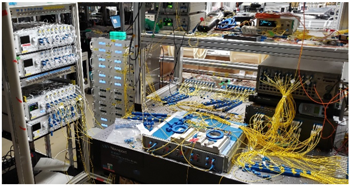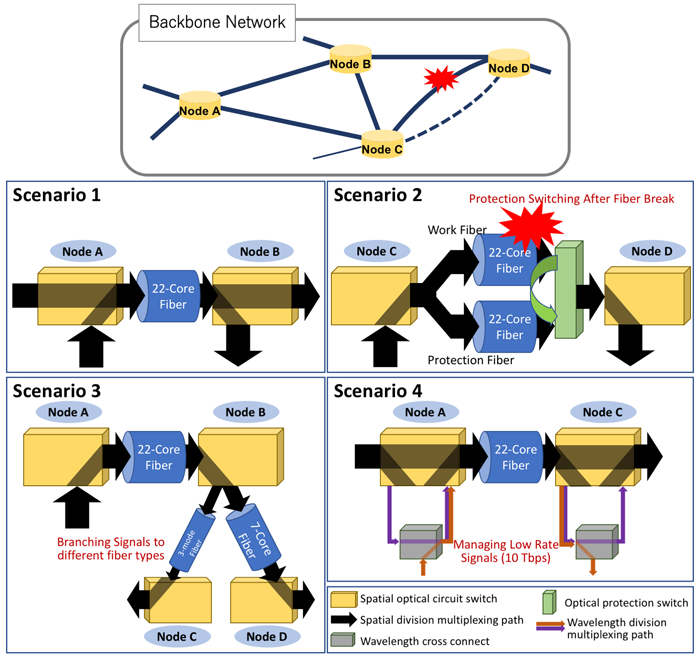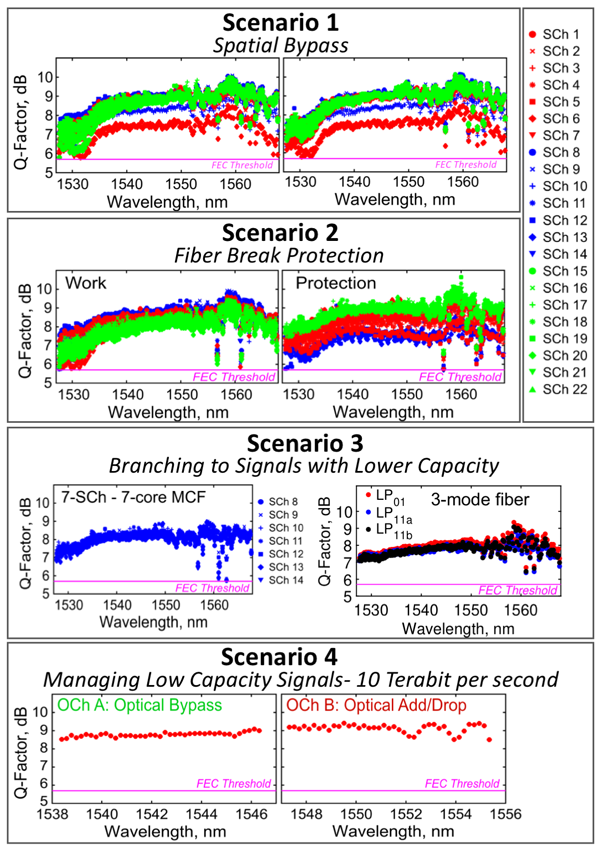First Demonstration of a 1 Petabit per Second Network Node
Gathering the latest advancements in optical fiber telecommunications technology towards practical petabit-class backbone networks
October 17, 2019
National Institute of Information and Communications Technology
Points
- The first 1 Petabit per second switching demonstration using spatial division multiplexing
- Prototype optical network testbed using multicore optical fibers and large-scale spatial optical switching
- Progress to the practical realization of ultra-high capacity petabit per second backbone networks
Background
Achievements

| Scenario | Switch Capacity | Outline | Application | Used Optical Fiber |
|---|---|---|---|---|
| 1 | 1 Petabit/second | Network Node with 1 Petabit/second switching capacity | Metropolitan networks | 22-Core Fiber |
| 2 | 1 Petabit/second | Redundant configuration to support fiber breaks | Metropolitan networks with possible network failures | 22-Core Fiber |
| 3 | 346 Terabit/second 148 Terabit/second | Branching of signals to different types of optical fibers with various capacities | Metropolitan Networks | 22-Core Fiber, 7-Core Fiber, 3-Mode Fiber |
| 4 | 10 Terabit/second | Management of low-capacity signals to achieve high granularity | Regional Networks | 22-Core Fiber |
Future Prospects
References
Previous NICT Press Releases
- October 13, 2015 "Realization of World Record Fiber-Capacity of 2.15Pb/s Transmission" - Promising Technology for Long-haul High-capacity Transmission Employing Single-mode Multi-core Fiber and Optical Frequency Comb Source -
- October 6, 2017 "The World-record 53.3 Tb/s Optical Switching Capacity for Data-center Networks" - NICT paves the way for next generation, highly efficient and green data-center networks -
- April 13, 2018 “Demonstration of World Record: 159 Tb/s Transmission over 1045 km with 3-mode Fiber”
- November 21,2018 “Successful Transmission of 1.2 Pb/s Over a 4-core 3-mode Optical Fiber with a Cladding Diameter of 0.16 mm” -Towards the early implementation of ultra-large capacity transmission with a new type of practical optical fiber-
- April 5, 2019 “Successful High-Capacity Transmission Over Multi-core Fiber Link Amplified with 19-core Optical Amplifier” - Towards practical realization of space-division multiplexing technology employing component integration, reduced energy consumption and record transmission capacity -
Appendix
1. Network Configuration

2. Experimental Results

Technical Contact
Hideaki Furukawa, Satoshi Shinada
Photonic Network System Laboratory
Network System Research Institute
NICT
Tel: +81-42-327-5694, 5679
E-mail:





















Media Contact
Sachiko Hirota
Press Office
Public Relations Department
NICT
Tel: +81-42-327-6923
E-mail:





















